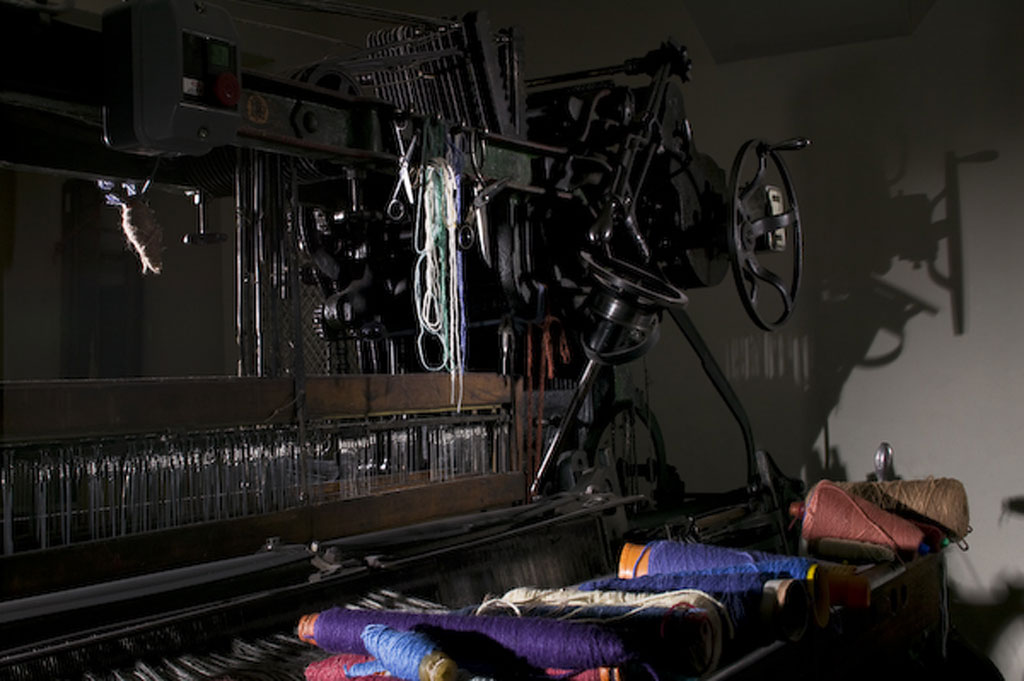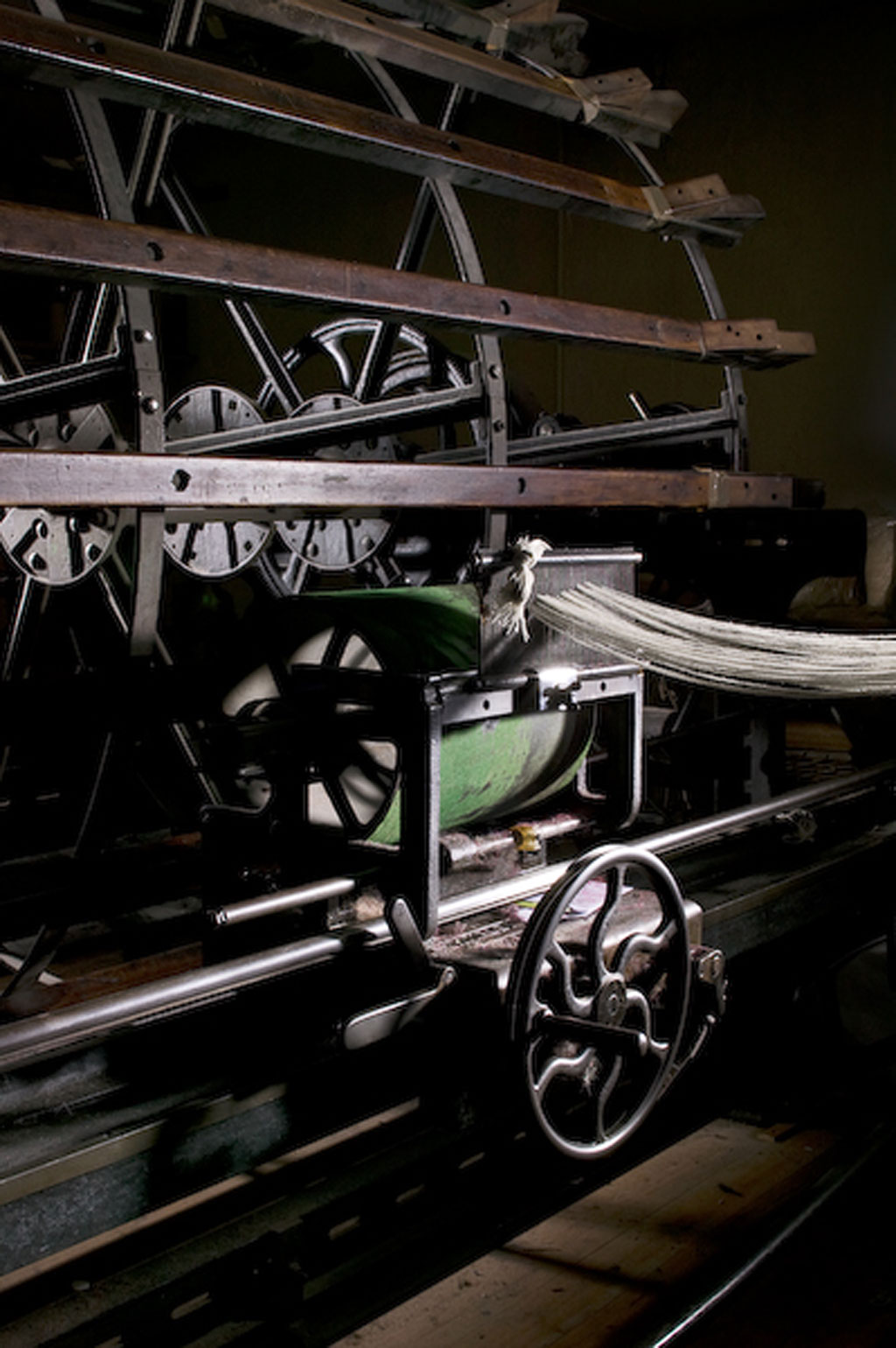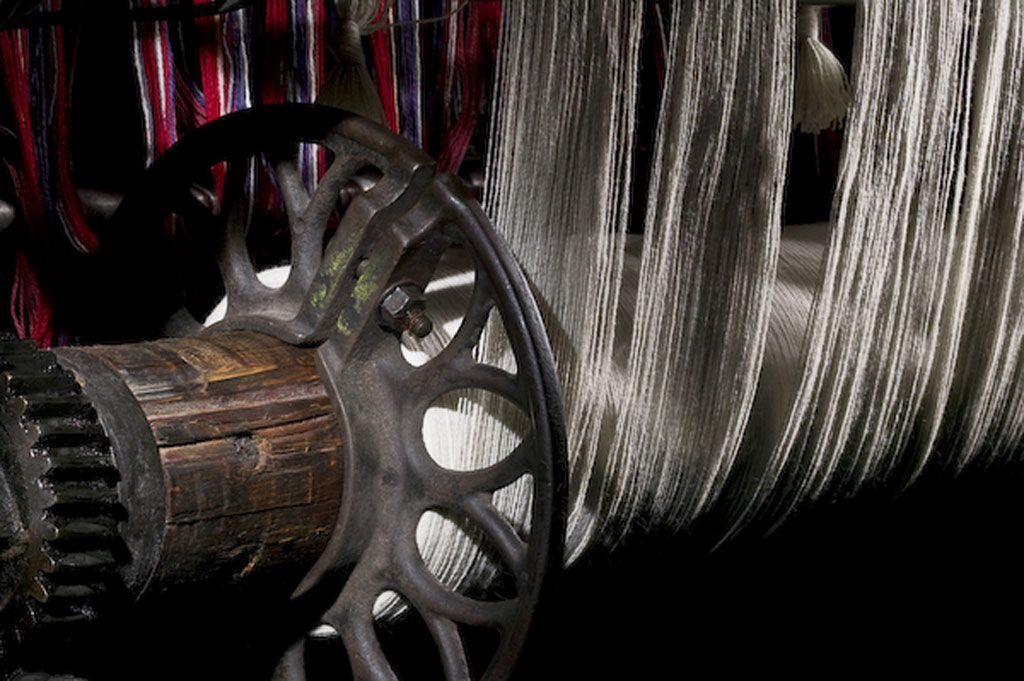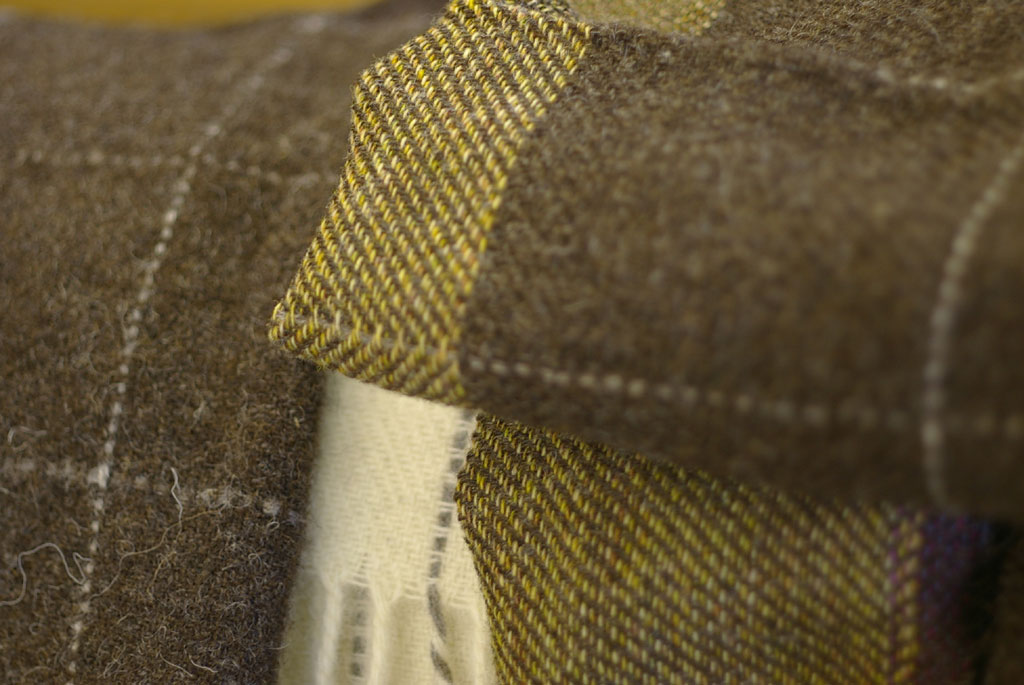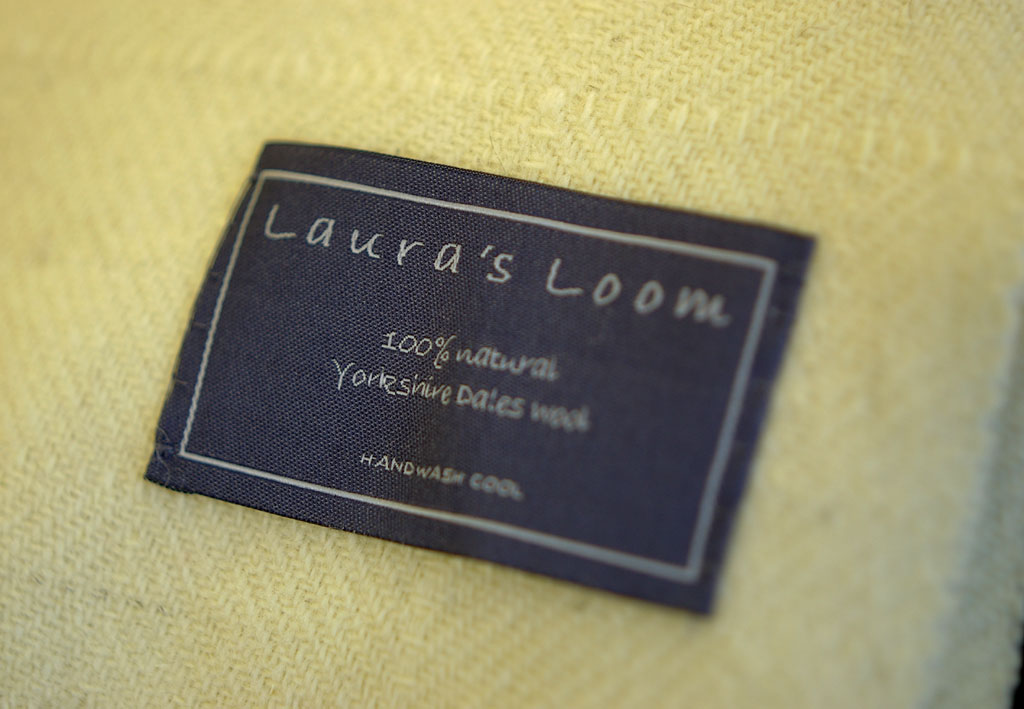This evening we conclude the wonderful story from sheep to textile that lies behind Laura Rosenzweig’s distinctive woven cloth goods. We’ve met the sheep behind Laura’s Looms, and we’ve seen their wool harvested and processed! In this last post from Laura we shall hear about how the final textiles are made. In case you haven’t already heard it over on the Sounds of Wool page of WOVEMBER, here is Laura talking about her work with local wool! A more detailed, in-depth version of the story Laura has shared throughout WOVEMBER was written for the Autumn 2012 edition of The Journal for Weavers, Spinners and Dyers – the Autumn 2012 WOOL ISSUE – a publication which of course WOVEMBER highly recommends!
[soundcloud url=”http://api.soundcloud.com/tracks/64355025″ iframe=”true” /]
I moved to Sedbergh in 2002 after working abroad for 17 years, first in America – where I also learned to weave, and then in Switzerland, where I discovered more weavers and some amazing yarns. Weaving had been my hobby, but in Sedbergh it became my job. With two small children attending the local primary school I had time to invest in my weaving interests and so I opened a handweaving studio at Farfield Mill, a local arts and heritage centre.
For a former weaving mill to have a weaver-in-residence was an added bonus for me, and for them.
The little weaving skill I had was the result of lessons in the States followed by several years of learning by my own mistakes. So in 2004 I enrolled on the HNC Handwoven Design course at Bradford College and a year later I started to teach weaving classes from my studio at the Mill.
At Farfield Mill my cones of yarn are arranged on a creel, and the warping begins. The warping mill at Farfield is 7 yards around. If only it was possible to turn the thing easily! Even hanging my entire body weight off the mill doesn’t cause it to turn, so it’s a good job there’s an electric switch these days!
The warp is wound in sections then transferred onto a back beam which is wheeled across into the loom room and manhandled onto the back of an 80 year old Dobcross loom.
Needless to say, it is not me doing all this hard physical labour but David, Farfield’s weaver extraordinaire who is somewhere around the age of 70 and has been in the weaving industry his entire working life. David’s knowledge of weaving, looms, yarn and his network of contacts have been invaluable to both Farfield Mill and to me. In no time at all he has twisted almost 1500 threads into place and three weekends later he has finished weaving up almost 200m of fabric, taken it off the loom and wrapped it ready for delivery to the finishers. As I tell my weaving students, a cloth isn’t finished until it is finished; weaving is only a part of the process.
And so the wool continues one more step on its journey, heading north to Schofields Dyers and Finishers located on the aptly named Huddersfield Road in Galashiels. Schofields is one of the few remaining finishers in a town as synonymous with the weaving industry as Bradford. Their huge warehouses contain dyeing machines (for in-the-piece dyeing), purlers for fringing, teasel machines for brushing, and enormous steaming and drying machines that measure more than 60 feet in length. Yards of cloth stretch overhead. Underfoot are stacked bolts of finished cloth for weavers all across the country.
You can hardly hear yourself speak above the din of the machines.
Schofields have taught me how to finish my cloth, showing me samples and giving me suggestions. The learning curve has been steep but ultimately successful. I have put my faith in their years of experience and been rewarded with beautiful products. After all the investment, from buying the wool at the farm gate, deciding how to have it spun, working out how many ends and picks per inch to weave my cloth and how large to make my throws, it is a huge and daunting moment when the fabric reaches the finishers, the place where it is transformed from a web of yarn into a thing of beauty. Overdo it and you’ve lost the cloth. Sometimes it’s a fine line but not once in the 16 years since I finished my very first piece of handwoven cloth have I lost that sense of magic when I see and feel a stiff and unyielding cloth taken off the loom become a pliable and beautiful fabric with a life of its own as it is washed and dried and pressed. As one farmer said on receiving a throw as a thank you present: “it looks a lot nicer like this than it does on t’sheep’s back!”
Many thanks to Laura for permission to publish her words and photos here throughout WOVEMBER – if anyone has a scarf or wrap by Laura, we would love to hear from you during our ‘Wearing Wool’ phase of WOVEMBER! All images and text © Laura Rosenzweig and used with her kind permission, except the close-ups of Laura’s Loom textiles at the end of the post, which were taken by Felicity Ford. To get your hands on some of this fabulous stuff, visit Laurasloom.co.uk
